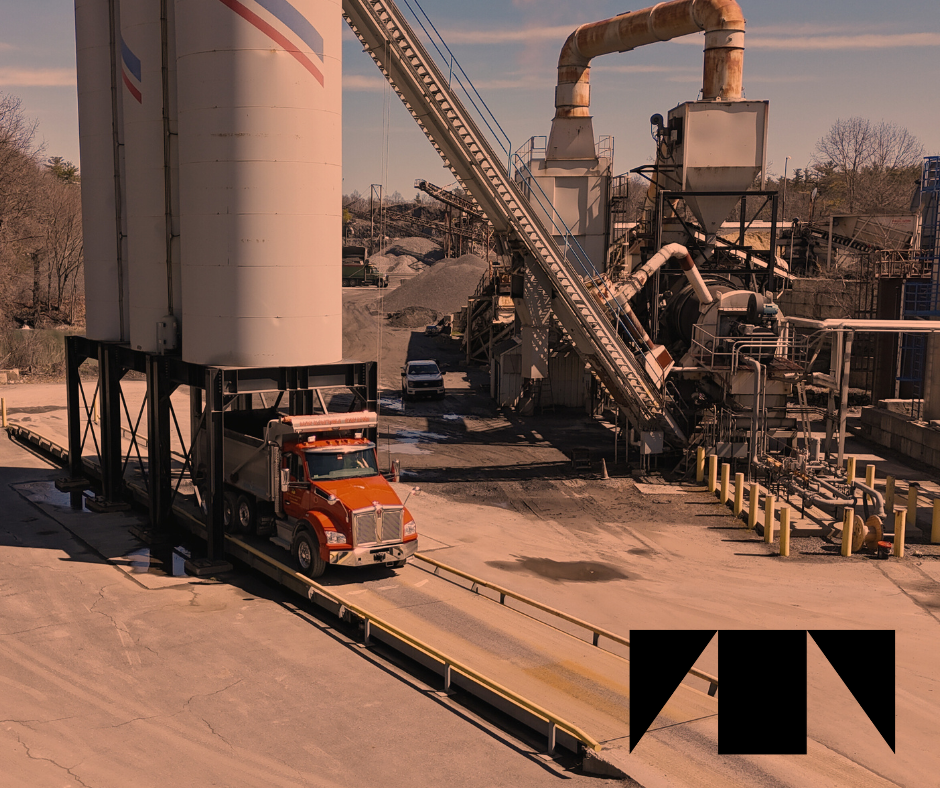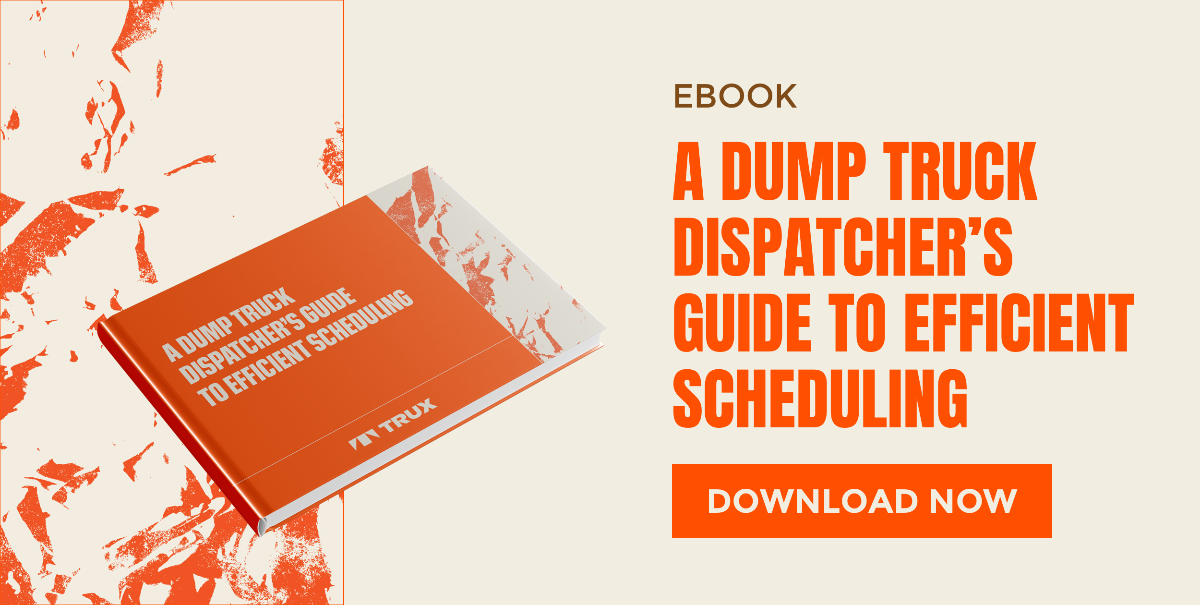
You’ve probably heard it before, “If it ain’t broke, don’t fix it.” But when it comes to dispatching trucks, sticking with the same old manual methods is exactly what’s breaking your bottom line.
Every time your dispatcher picks up the phone, jots down a note, or sends a dozen texts to coordinate hauls, your operation slows down. Missed messages, late deliveries, and trucks sitting around with nowhere to go all add up.
You’re not just losing time, you’re burning money.
In this post, we’re calling out the hidden costs that come with manual dispatching. We’ll show you where the waste really happens, how it affects your jobs, and what you can do to get control back without adding more to your plate.
Click a topic below to jump to the relevant section:
The True Cost of "Old School" Dispatching
The Ripple Effect on Your Projects
The True Cost of "Old School" Dispatching
Manual dispatching might feel familiar, but it’s holding your business back. If you’re still using whiteboards, phone calls, and text messages to manage hauls, you're pouring time and money down the drain.
Let’s say your dispatcher spends 1.5 hours each morning calling haulers, confirming availability, and adjusting schedules. That adds up to over 7 hours a week just managing communication—nearly a full workday gone before a single load is moved.
Now add in the ripple effects. A truck sent to the wrong site or delayed by miscommunication can cost you hundreds in wasted fuel, driver time, and job site delays. Crews sit around waiting. Equipment goes unused. Customers get frustrated.
For example, if you're running ten trucks and each hauler ends up idle for just 30 minutes a day, five days a week, that's 25 hours of paid downtime every week. That’s time you’re paying for, but not getting anything back.
These problems aren’t one-offs. They’re baked into the way manual systems work. And the longer you rely on them, the more they eat into your margins and slow down your jobs.
The Ripple Effect on Your Projects
When dispatching breaks down, the whole job starts to suffer. One late truck can throw off the day’s schedule. Materials don’t arrive when they’re needed. Crews sit idle. And instead of keeping the job moving, everyone is waiting and wondering what’s going on.
It’s not just about a delay. It’s about what that delay causes.
If your customer has a crew on-site and material doesn’t show up, that’s money they are losing by the minute. The longer they wait, the more it costs them. And when delays start costing your customers money, the pressure lands on you.
Even if you are not the one paying that crew, you are the one they will remember when the job runs behind or someone higher up starts asking questions. Missed delivery windows and unreliable communication do more than slow things down. They shake trust.
If a foreman cannot count on you to deliver on time, they will look elsewhere. Delays cost your customers money. Lost trust can cost you their business.
Manual dispatching makes it harder to stay on track. When job details change and updates do not reach the right people in time, your operation loses its edge and your customer relationships take the hit.
Hidden Financial Drain
Manual dispatching does more than slow you down. It eats away at your bottom line in ways that are easy to miss.
When you rely on texts, calls, and paper logs, it is almost impossible to know exactly when a truck started or finished a job. Without real-time tracking or shift validation, you might be paying for time that was never worked. Ten extra minutes here, twenty there, and suddenly your labor costs are out of control.
Overpayments happen often, especially when you are using third-party haulers. If you cannot confirm when a truck showed up or how long it stayed, you are trusting guesswork. That guesswork can cost you thousands over the course of a season.
There is also the admin side. Chasing down load slips, verifying times, and correcting errors wastes hours every week. Your back-office team could be handling more important tasks, but instead, they are stuck cleaning up paperwork problems.
And let’s not forget the disputes. Without clear digital records, it is your word against theirs. That kind of uncertainty leads to frustration, missed payments, and strained relationships.
Manual systems do not just cost you time. They cost you money, trust, and control.
How Trux Solves the Problem
Trux replaces the stress and guesswork of manual dispatching with tools that actually make your job easier.
Instead of calling and texting haulers one by one, Trux lets you assign jobs with just a few clicks. You can adjust schedules, send updates, and manage last-minute changes from your phone or computer. No more chasing people down or hoping they got the message.
With real-time GPS tracking, you always know where your trucks are and what they are doing. You do not need extra hardware. Just give drivers the app and you are set. Whether you are using your own fleet or third-party haulers, you can see who is on the job and who is falling behind.
Trux also uses geofencing and digital shift tracking, so you only pay for the time actually worked. No more guesswork. No more overpayments.
And when the job is done, you get digital load slips in real time. That means faster invoicing, fewer mistakes, and less time wasted in the back office.
Trux does not just organize your dispatching. It gives you control over your entire hauling operation, from the first load to the final payment.
Results That Matter
When you switch from manual dispatching to Trux, the results show up fast.
Dispatchers spend less time on the phone and more time actually managing jobs. With better coordination and fewer delays, crews stay productive and jobs move forward without constant interruptions.
Plants and job sites see faster turnarounds. That means more loads delivered each day, better use of equipment, and fewer bottlenecks. When trucks are moving instead of waiting, your entire operation runs smoother.
Haulers know exactly where to be and when. You know exactly what you are paying for. And your customers get the kind of reliability that keeps them coming back.
Back-office work gets easier too. With digital tickets and accurate time logs, invoicing is faster and cleaner. Your team spends less time fixing mistakes and more time adding value to the business.
Trux helps you move more material, save time, and protect your profits. That is the kind of result that matters.
Conclusion
If your dispatching still runs on phone calls and paper, you are not just behind the times—you are leaving money on the table. Jobs are only getting tighter. Margins are only getting thinner. And your competition is already finding ways to work faster and smarter.
Trux gives you the tools to take control of your hauling without adding more work to your plate. It is not about learning a new system. It is about finally getting a system that works for you.
See how it fits your operation. Schedule a quick demo today and take the first step toward a more efficient job site.

Related Posts
How to Find Truck Drivers Looking for Work - Post Jobs on Trux
How many times per month do you find yourself wishing you had just a few more trucks to get your...
Dump Truck Driver Recruitment: Requirements & Job Descriptions
Establishing strong working relationships with reliable dump truck drivers is crucial in the...
The Impact of Efficient Dispatching on Customer Satisfaction
In this article, we will explore the vital role that dump truck dispatchers play in ensuring smooth...
